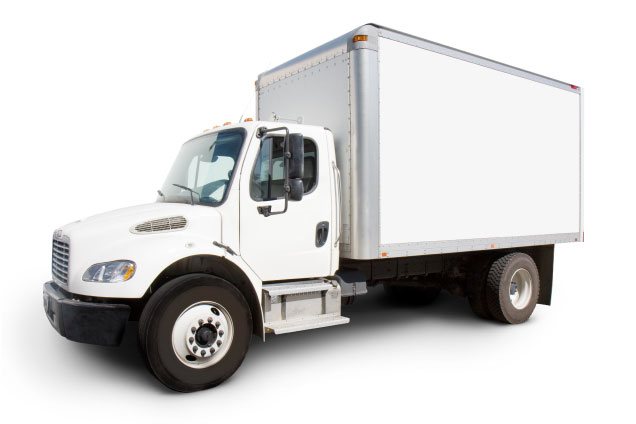Safely Storing Your Freezer When Idle
Posted on 18/06/2025
Safely Storing Your Freezer When Idle: The Complete Guide
Whether you're moving, remodeling your kitchen, or simply need to switch off your freezer for an extended period, it's essential to store your idle freezer safely and correctly. Neglecting this process can lead to foul odors, mold, and even mechanical failure. In this comprehensive guide, you'll discover all the vital steps and tips for safely storing your freezer when idle - ensuring it stays in prime condition and ready for use when needed.
Why Safe Freezer Storage Matters
Freezers are a substantial investment for most households. Whether chest freezers, upright models, or compact units, they are engineered to optimize food preservation. However, when freezers are left unused for weeks or months, improper storage techniques can inflict irreversible damage. Storing your freezer safely when not in operation helps avoid:
- Mold and Mildew Growth: Residual moisture is a breeding ground for mold.
- Foul Odors: Food residues or moisture can cause unpleasant smells.
- Mechanical Problems: Inactivity combined with adverse conditions can impact internal mechanisms.
- Pest Intrusion: Unused, uncleaned appliances may attract rodents or insects.
- Lifespan Reduction: Incorrect storage shortens your freezer's operational life.
Let's walk through the optimized procedures for storing your freezer while not in use - whether for a short break or a long layup.

Step-by-Step: How to Store a Freezer When Not in Use
1. Unplug and Empty the Freezer
This may seem obvious, but the first step in safely storing a freezer during an idle period is to unplug it and remove all contents. Don't forget to:
- Transfer Food: Discard expired items and relocate all other frozen goods to another freezer or use them.
- Remove All Shelves and Drawers: Take out removable components to clean separately.
Pro tip: Always unplug the freezer before you begin defrosting or cleaning to avoid electric shock.
2. Defrost Thoroughly
Leftover ice can melt during storage, causing water damage and mold. To defrost your freezer safely before long-term storage:
- Leave the freezer door open after unplugging.
- Place towels or a shallow tray underneath to catch melting ice.
- If the ice is thick, gently remove large chunks once they loosen, but never use sharp objects to pry ice away--this may puncture or damage your freezer.
- Wipe down any remaining moisture with a clean towel.
3. Deep Clean the Interior
For safe idle freezer storage, cleanliness is non-negotiable. Dirty appliances will smell terrible later and attract pests.
- Wash the inside thoroughly with a mixture of warm water and mild baking soda (about 1 tablespoon per quart of water).
- Scrub all crevices, including gaskets and corners, with a soft cloth or sponge.
- Shelves and drawers should be cleaned separately and allowed to dry completely.
- If lingering odors persist, try a vinegar and water solution or a specialized refrigerator deodorizer.
Ensure all surfaces are dry before moving on to prevent mildew.
4. Clean and Inspect the Exterior
Don't neglect the outer casing of your freezer:
- Wipe down the exterior with a damp cloth and mild detergent.
- Inspect the power cord for frays or damage; schedule repairs if necessary.
- Check door seals for cracks, tears, or wear. Faulty seals reduce efficiency when you reuse the freezer.
Tip: Clean the condenser coils (if accessible) to remove dust buildup, which improves performance after storage.
5. Allow Complete Air Drying
Before sealing up the freezer for any length of time, allow it to air dry with the doors open for at least 24-48 hours. This step is essential to prevent any trace moisture from becoming trapped and leading to mold infestation.
6. Deodorize Preventively
- Place an open box of baking soda inside the freezer to absorb residual odors.
- Some owners prefer to use dedicated odor absorbers like activated charcoal or silica gel packs.
7. Store with Doors Ajar
This is the single most important rule in safely storing a freezer that's idle: never close and latch the door tightly. Closed doors trap humidity, allowing molds to thrive. Instead:
- Wedge the door open with a rolled-up towel, plastic wedge, or a special spacer. The opening should be small but sufficient for air to circulate.
- If your freezer must move or be stored upright, secure the door gently--do not shut it fully.
8. Protect Electrical Components and Power Cord
Wrap and secure the power cable using twist ties or zip ties. Tuck it behind or underneath, so it's not under strain or trip hazard.
Be sure the plug is clean and dry before storing.
Choosing the Best Location for Idle Freezer Storage
Considerations for Ideal Freezer Storage Spots
Where you store an idle freezer is as crucial as how you prepare it. Follow these tips on how to store a freezer when not in use:
- Keep it Indoors: The best environment is dry--not humid--like a garage, basement, spare room, or utility area. Avoid areas exposed to direct sunlight, rain, or consistently high humidity.
- Avoid Extreme Temperatures: Most freezers are designed for temperatures between 10?C and 32?C (50?F - 90?F). Excessive heat or prolonged cold can degrade seals and internal fluids.
- Elevate the Freezer: Place the freezer on blocks or pallets to keep it off potentially damp floors, especially in basements or garages.
- Ensure Air Circulation: Leave space around the freezer for airflow--at least 2-3 inches from walls.
Tips for Long-Term Freezer Storage
For prolonged idle periods (several months or more), consider these extra steps:
- Pest Control: Sprinkle boric acid or set up traps nearby to deter rodents.
- Periodic Checks: Every couple of months, inspect the inside and outside. Look for signs of moisture, mildew, or insects.
- Climate Control: Use a dehumidifier in your storage area if your climate is particularly damp.
- Protect from Dust: Cover your freezer with a breathable fabric sheet (avoid plastic, which can trap moisture).
If you notice any unusual odor, mildew, or moisture, repeat the cleaning and drying steps as needed.
Storing a Freezer Upright vs. Sideways
Always store a freezer in its upright position. Tilting or laying it on its side can cause compressor oil to flow out of position, leading to startup problems or damage later. If you must move it on its side briefly, let it rest upright for at least 24 hours before plugging it back in.
Preparing to Reuse Your Stored Freezer
When it's time to put your freezer back into service, here's how to do it right:
- Final Clean: Give the interior a quick wipe with baking soda solution and let dry.
- Inspect Mechanicals: Check the cord, plug, and seals for any damage or pest evidence.
- Power Up: After plugging it in, allow the freezer to run empty for several hours to reach optimal temperature before restocking.
- Reinstall Accessories: Insert all shelves and drawers securely.
If any issues arise--such as strange noises or persistent odors--get a professional service check before resuming full usage.

Frequently Asked Questions (FAQ): Safely Storing Idle Freezers
-
Q: Should I leave my freezer plugged in when not in use?
A: No. Unplugging saves electricity, reduces fire risk, and is safer for long-term idle storage. -
Q: Why not keep the freezer door closed during storage?
A: A closed door traps moisture, creating ideal conditions for mold and bad odors. -
Q: Is it safe to store a freezer in an unheated garage?
A: Only if the garage doesn't get too cold or humid. Extreme temps can harm seals and mechanisms. Indoor storage is best. -
Q: How do I keep rodents and bugs out of an idle freezer?
A: Deep cleaning, scent deterrents, and regular checks help. Block holes and clean surroundings to discourage pests. -
Q: Can I use moisture absorbers inside my idle freezer?
A: Yes! Baking soda, silica gel, or activated charcoal all help with moisture and odor control.
Conclusion: Your Freezer's Longevity Starts with Safe Storage
Many households underestimate the importance of safely storing a freezer when not in use. With proper preparation, cleaning, and a suitable environment, you'll prevent common headaches like smells, mold, or mechanical problems. Taking these steps not only preserves your appliance but also saves money and hassle in the long run.
Whether your freezer will sit idle for a season or a year, these best practices will keep it fresh, dry, and ready for flawless operation when you need it next. Remember: clean, dry, and slightly open is the mantra for successful idle freezer storage. Happy storing!





